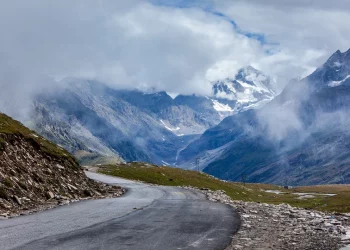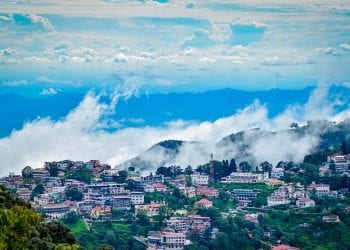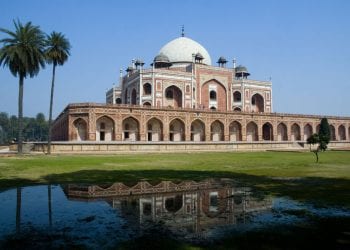Witnessing Lucknow From An Architect’s Lens
The ancient capital of some of the wealthiest empires that ruled India, Lucknow today is known as ‘The City of Nawabs’. During the eighteenth and nineteenth centuries, the Delhi Sultanate, followed by the Mughal Empire and finally the Nawabs, contributed to Lucknow’s historical and cultural richness through their love of art and architecture. This gave rise to the exquisite wealth of architectural structures across the city. Carefully preserved, centuries-old regal heritage monuments and their rustic charm continue to attract tourists worldwide. Being an extremely popular tourist destination, it will be easy for you to book family hotels in Lucknow, like OYO 89916 Hotel Dileep, that complement the city’s gorgeous architecture.
Here is a list of top sightseeing spots in Lucknow to marvel at this ancient city’s regal architecture and have an unforgettable tour of Lucknow.
1. Bara Imambara
Hafiz Kifayat Ullah designed the Bara Imambara in 1785 through a combination of Rajput, Mughal and Gothic architecture. Asaf-Ud-Daula, Nawab of Awadh, ordered the monument to be built in exchange for providing employment and food to the common people during a famine.
The structure is built using Lakhori bricks and consists of 9 halls and a ceiling that is 15m tall unsupported by any columns or beams. The Central Hall is the largest unarched hall in the world that was meant to be used for prayers. There has been no use of wood or metal in this architectural marvel. Bara Imambara consists of the Asfi Mosque, Baoli and the famous Bhool Bhulaiya – an enormous labyrinth of doors and passages with just two exits. Some of the passageways lead to the ceiling for a splendid view. You can book a room at OYO Flagship 77588 R K International, where you can keep your luggage and head out to explore the monument.
2. Rumi Darwaza
The Rumi Darwaza is the gateway to Old Lucknow and stands between Bara Imambara and Chhota Imambara. The sixty feet tall gateway is also called the Turkish gateway since it replicates Bab-i-Humayun of Turkey. A splendid example of Nawabi Architecture which meant to preserve Mughal architecture but experimented with building materials and designs. This structure is made of lime-coated bricks and has carved designs of flowers and fish. The topmost part is decorated with a ‘chhatri’ or umbrella-like structure. One of the best family hotels in Lucknow is OYO Townhouse 913 Ekana Grand, located close to this site.
3. Chhota Imambara
Chhota Imambara, also called Hussainabad Imambara, is the city’s second most popular tourist attraction. It was built in 1838 by Nawab Muhammad Ali Shah entirely in the style of Mughal architecture as a congregational hall for Shia Muslims. The structure consists of a gilded dome top, several turrets, gilt-edged mirrors and two minarets on either side. It is decorated with floral designs and Quran verses in Islamic calligraphy. The monument was also called ‘The Palace of Lights’ because of its exquisite decoration on special occasions. It also consists of Satkhanda or watchtower, Naubat Khana, Hussainabad Mosque and the Tomb of Princess Zinat Algiya.
4. Jama Masjid
A trip to Lucknow is incomplete without a visit to the Jama Masjid. One of Lucknow’s most significant historical landmarks, the Jama Masjid, was built in 1839 by Nawab Mohammad Ali Shah Bahadur. The main difference between Delhi’s Jama Masjid and Lucknow’s Jama Masjid is that this mosque was constructed with Lakhori bricks and plastered with lime. The mosque, a rectangular prayer hall, consists of 260 pillars and eleven arches, three domes adorned with an inverted lotus on the top, and four tall and proud minarets around the domes. In addition, the Imambara of Malika Jahan and the tomb of Mohammad Ali Shah are on the premises.
5. Charbagh Railway Station, Lucknow
One of the few railway stations that have become a tourist attraction, the Charbagh Railway Station is known for its grandeur and strength. It has the iconic Mughal, Rajput and Awadhi architecture, coloured in red and white, and domes and towers signifying its power. The name Char Bagh comes from the four gardens believed to have existed here until 1867, one of which still exists today. The place holds immense historical significance as it was here that Mahatma Gandhi met 27-year-old Jawaharlal Nehru for the first time.
Conclusion
A Lucknow tour is often incomplete without the monuments mentioned above. Along with witnessing a royal heritage, you can also have a royal stay at the best hotels in Lucknow, such as OYO Townhouse 76476 Jashn, where you can relax and rest after a day full of trying out Lucknow’s food and marvelling at the architecture.
Recent Posts
Top Picks

- OYO
 15 April, 2024
15 April, 2024 - Cultural Tour

- OYO
 15 April, 2024
15 April, 2024 - Cultural Tour

- OYO
 15 April, 2024
15 April, 2024 - Cultural Tour

- OYO
 15 April, 2024
15 April, 2024 - Cultural Tour

- OYO
 15 April, 2024
15 April, 2024 - Cultural Tour

Please rotate your device
Please go back to portrait mode for the best experience





 April 15, 2024
April 15, 2024 



